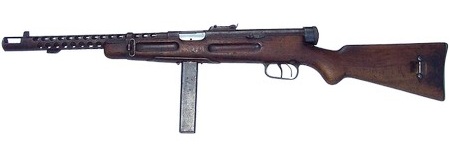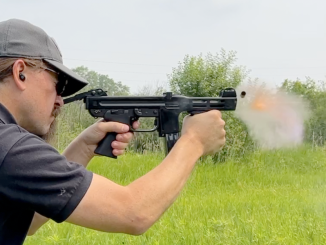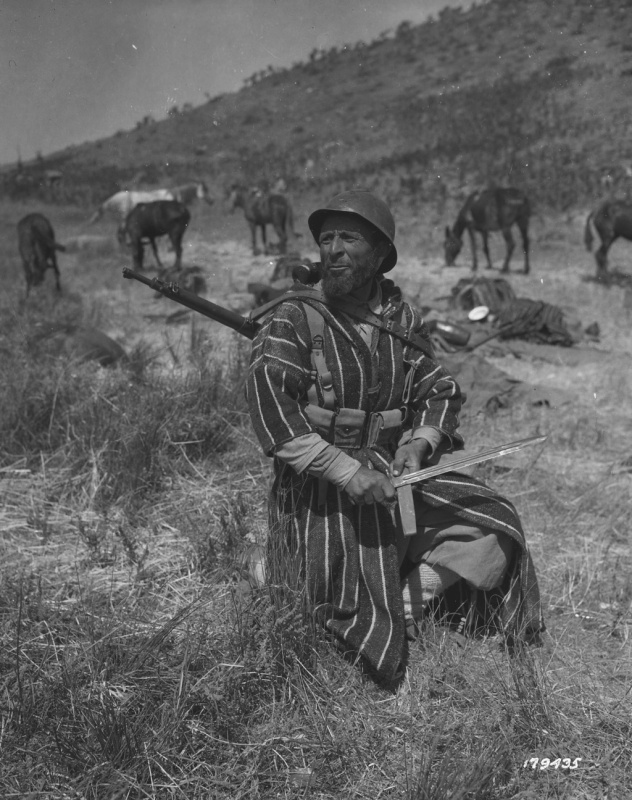The Beretta M1938 submachine gun was designed by Beretta engineer Tulio Marengoni as an improvement on the earlier M1918 design (which was in turn based on the Villar Perosa). Developed during the mid 1930s, the initial variant (M38) was a high quality gun, and very reliable. Despite the tubular appearance, it used a milled receiver and was fairly expensive to manufacture – one of the last of the first generation SMG designs.

Mechanically, the M38 series was typical of submachine guns of its time, and not particularly innovative. However, it was a solid and well-made gun and developed a very good reputation. All variants had dual triggers; the front one for semiauto fire and the rear for full auto. Magazines were made in 10-, 20-, 30-, and 40-round capacity, double-stack and double-feed (meaning rounds alternated between being on the left and right, instead of being forced into a single column at the top of the magazine). All of the M38 family guns were chambered for 9mm Parabellum, and fired at 400-500 rounds per minute.
You can see a breakdown of all the variants of the M38 family of submachine guns on the Beretta M1938 Family page in the Vault, as well as an Italian brochure on the Model A5 post-war version made for export.




As a left hander, I appreceated the LHS ejection port. Not certain why Marengoni did this, since most of the world is right handed. These are very comfortable to shoot and had a great reputation for reliability and durability. I think the highly regarded Swedish ‘K’ magazine was developed from the Beretta 1938 magazine.
I spent a very memorable day at a strip mine with one of these. It is one of the most pleasant smg’s to shoot, very controllable, not a hiccup all day. It had to be one of the top 3 battlefield pick-ups in WW2.